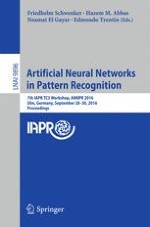2016 | OriginalPaper | Buchkapitel
A Hybrid Recurrent Neural Network/Dynamic Probabilistic Graphical Model Predictor of the Disulfide Bonding State of Cysteines from the Primary Structure of Proteins
verfasst von : Marco Bongini, Vincenzo Laveglia, Edmondo Trentin
Erschienen in: Artificial Neural Networks in Pattern Recognition
Aktivieren Sie unsere intelligente Suche, um passende Fachinhalte oder Patente zu finden.
Wählen Sie Textabschnitte aus um mit Künstlicher Intelligenz passenden Patente zu finden. powered by
Markieren Sie Textabschnitte, um KI-gestützt weitere passende Inhalte zu finden. powered by
